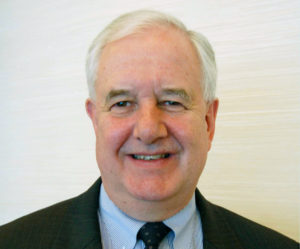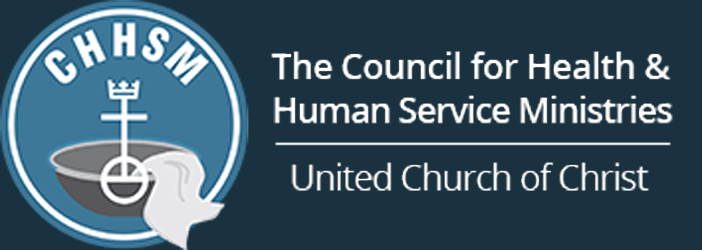A Religion of the Heart and the Hands

The Rev. John H. Thomas
The Rev. John H. Thomas, former UCC general minister and president and retired Chicago Theological Seminary faculty member, recently lifted up the work of UCC predecessors — now part of CHHSM — during a sermon on Luke 24:13-16,28-31 at Epiphany UCC in Chicago. These are his words, reprinted with permission:
The women and men who founded what became the Evangelical Synod of North America, the denominational roots of Epiphany, were Germans who migrated to the Midwest in the middle decades of the 19th century, settling first in and around St. Louis and then spreading along the Mississippi, Missouri, and Ohio rivers. Eventually they established congregations in cities like Detroit, Cleveland, and Chicago. Like many immigrants before and after, they came seeking land and livelihood in the expanding western territories before the Civil War and continuing into the early twentieth century.
But they also carried with them a distinctive religious tradition shaped by two factors. The first was the decision of the Prussian emperor at the beginning of the 19th century to unite the Lutheran and Calvinist churches in his realm into a single Protestant Union Church. The second was a broad movement among Protestants in Europe called Pietism which emphasized a religion of the heart, that is, a warm personal relationship with Christ expressed in compassionate service rather than rigid adherence to strict doctrinal orthodoxy of either a Lutheran or Calvinist variety. This distinguished the new German immigrants from German atheists and free thinkers who also came at that time fleeing the failure of their attempted liberal political revolutions. It also differentiated our congregation’s forebears from ultra-strict Lutherans who emigrated from Germany because they felt their theological purity had been threatened by the emperor’s ecclesiastical union.
This tradition of and ecumenical personal piety and humanitarian service found in the Evangelical Synod, what we might called a religion of the heart that emphasizes our relationship to Jesus rather than the accuracy of a particular creed or confession, and a religion of the hands which expresses God’s love for all, is part of what makes up the DNA of Epiphany and many churches like ours in the United Church of Christ. These Germans also understood that our service had to be more than simply the private acts of individuals if it was to address the profound social needs of the community. So, in the years after their arrival, they established institutions: Hospitals in places like St. Louis, Evanston, Indiana, and Chicago staffed by a consecrated order of women leaders called Deaconesses who served as nurses and social workers. Homes for the aged. Orphanages. Neighborhood settlement houses. It was an impressive achievement for a relatively small denomination of modest resources.
Many of these institutions live on today. An orphanage founded by St. Pauls Evangelical Church, now on Fullerton Avenue, started out as the Evangelical Lutheran Orphanage Asylum and has now grown into UCAN, a large program on the West Side of Chicago serving some of our city’s most vulnerable at-risk youth. Chicago Evangelical Deaconess Hospital became Evangelical Health Systems and then merged with Lutheran General Health System to form what is now Advocate Health Care. St. Pauls House, a retirement community on the north side, started out as a ministry of St. Pauls Evangelical Church. The German Evangelical Orphanage and Old Peoples’ Home Society of Northern Illinois in Bensenville lives on today as a ministry building and operating affordable senior housing across the country. Look closely at some of our most sophisticated health care, housing, and social service institutions right here in Chicagoland and you will see traces of our forebears and their religion of the heart and religion of the hands.
Early in the 2000s, I had the privilege of visiting another one of these institutions in St. Charles, Mo. Emmaus Homes was founded in 1893 by Evangelical pastors who saw a need to care for people with developmental disabilities and epilepsy. By the time I visited, many of the residents were moving into the community and the old home was transitioning from institutional care to support services for individuals in independent or group home living arrangements. But there was still a residential community when I was there. The chaplain told me a story about one of the residents I met during my visit. This woman often gave tours to church groups that visited Emmaus to lead worship, bring gifts, or visit residents. Over the main lobby door was a painting of the Biblical scene in Luke which we read this morning. It wasn’t great art. But it meant a great deal to this particular resident. She always stopped the tour in front of it, pointed to the mural, and said proudly and confidently, “And this shows when Jesus came to visit Emmaus, in St. Charles, Mo.”
Perhaps we chuckle at this apparently confused assertion, chalking it up to the resident’s mental limitations. Obviously, Jesus never came to visit Emmaus Home in St. Charles, Mo. He never set foot outside of ancient Palestine and, even if he had, St. Charles, Mo., didn’t exist then. But what is certainly false historically and geographically, is in fact profoundly true theologically. What our resident friend may not have grasped with her head she knew in her heart. Jesus had come to her and to her community, just as the Risen Christ revealed himself to the disciples in Emmaus a day’s walk from Jerusalem on the day of his resurrection. And I suspect for her and the other residents at Emmaus, as for those fraught disciples in the days following the crucifixion, the encounter with Jesus often happened when they sat together in their dining room, or in the chapel, and broke bread together.
When we gather at our communion table we often think of Jesus as the host, welcoming his disciples to an upper room in an extravagant gesture of hospitality. In so doing, we celebrate the fact that all are welcome, even in a world where many still experience walls and barriers and doors. But we should also think of Jesus as the invited guest, accepting the hospitality of his disciples at a table in the village of Emmaus. “Stay with us, because it is almost evening, and the day is almost over.” Or even better, think of our friend at Emmaus Home and her community, persons with developmental disabilities who were often invisible to the wider community, frequently marginalized or feared. Think of them, inviting Jesus to be their guest, at their tables, breaking bread, welcoming him into their hearts in St. Charles, Mo., or anywhere else he is welcome.
Tragically, over the centuries the church has spilled an enormous amount of ink and considerable blood over the question of how exactly Christ is present when we break the bread at this table. Is it a physical presence, the bread and wine somehow transformed into his actual body and blood? Is it a symbolic presence, pointing our minds back in time to a meal “once upon a time in a place far away?” Is it something in between? The disciples of course did not seem terribly preoccupied by this question, or how it was that a crucified Jesus had even been with them on the road and at the table. “Were not our hearts burning within us?” they asked themselves. A parishioner of mine in Pennsylvania once put it like this: “When I drink the wine, and feel it burning in my throat as I swallow it, if feels as if Jesus is getting inside of me.”
“Stay with us. For it is almost evening.” If, as in this second communion story at Emmaus, Jesus is the guest and we are the hosts, then how do we make up our invitation list for this sacred meal? Perhaps Matthew gives us a clue: “I was hungry; you fed me. I was thirsty; you gave me drink. I was a stranger; you welcomed me. I was naked; you clothed me. I was sick; you cared for me. I was in prison; you visited me.” What if we were to imagine that Jesus isn’t here at this table waiting for us with open arms, but that he is waiting for us to welcome him among the impoverished, the excluded, the alien, the addicted, the mentally troubled, the despised, the worn out and the broken? Like the tax collector Zacchaeus who welcomes Jesus to his home for dinner?
And if we imagine the table this way, then we begin to see the connection between the religion of the heart and the religion of the hands. Of the deep sense of Christ’s presence and of the compassionate service that is always inviting the Christ hidden in the stranger to join us for companionship, for care, for inclusion, and yes, for a meal. So, it shouldn’t surprise us, despite our modern rational ways of understanding, that Jesus came to Emmaus in St. Charles, Mo. After all, here was a place that for decades had invited him in, one with those whose disabilities often veil his presence from our eyes.
Today, rather than coming toward this table with invitation in hand eager to be embraced by the welcoming Christ, gather with this prayer: “Come, Lord Jesus, be our guest. Whether you are like us or not. Whether you make us comfortable or anxious. Whether you seem to have it all or appear to have nothing. Come, Lord Jesus. Be our guest.” Then maybe, just maybe, Jesus will come as well to Epiphany, in North Center Chicago, Illinois, right here. Right now.
Join Our Mailing LIst
"*" indicates required fields
